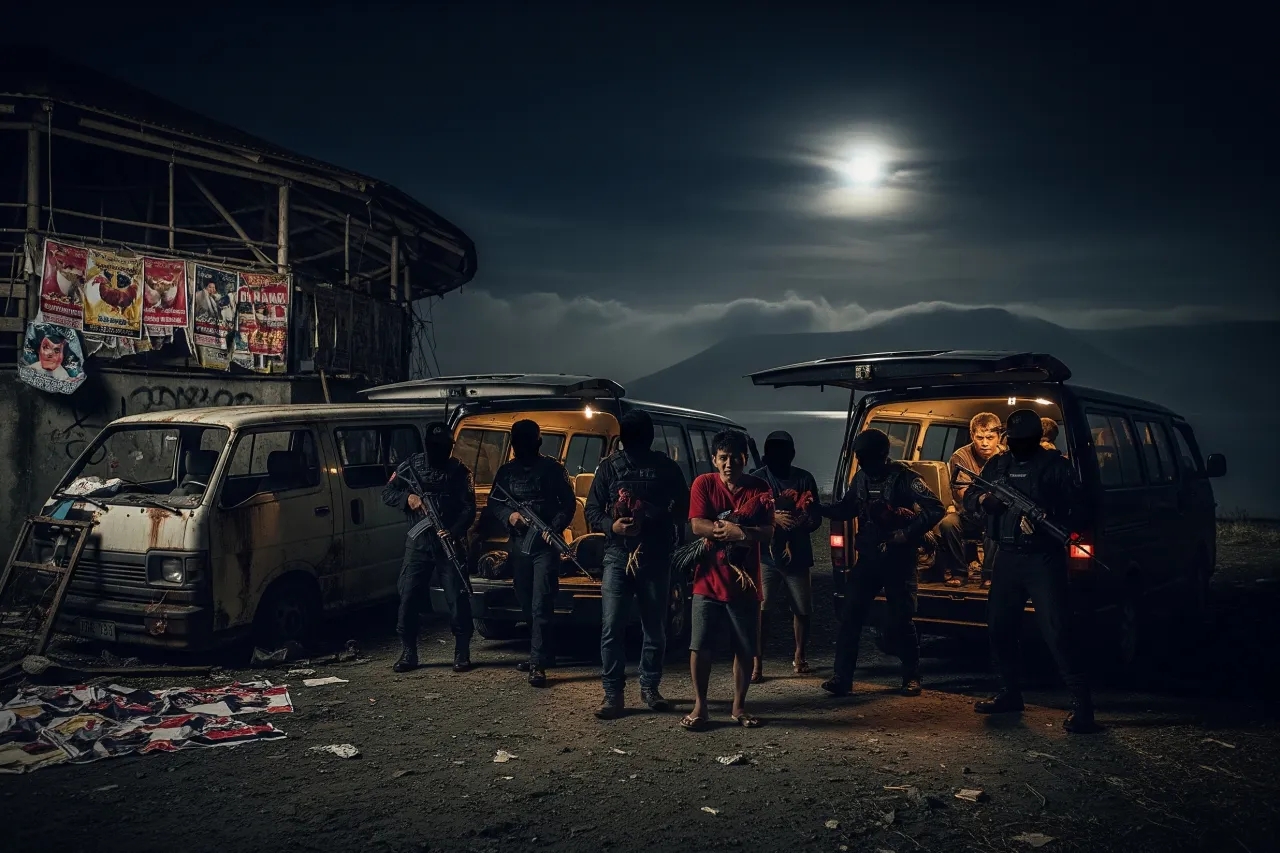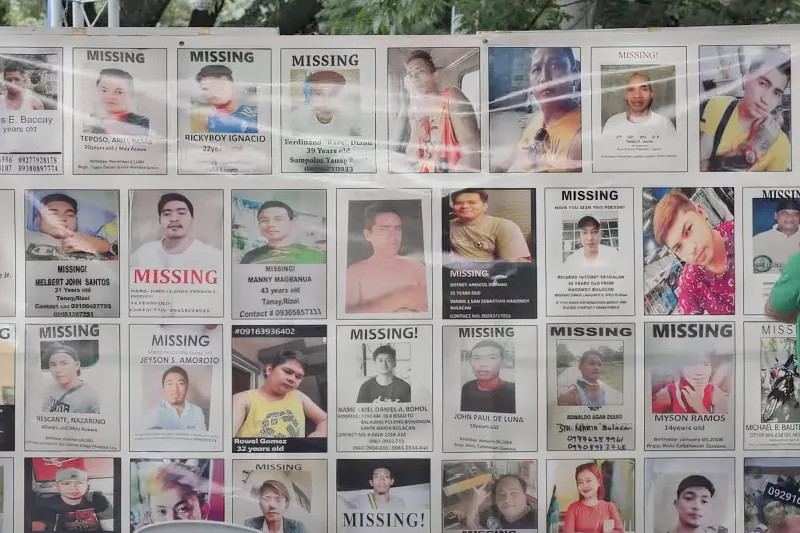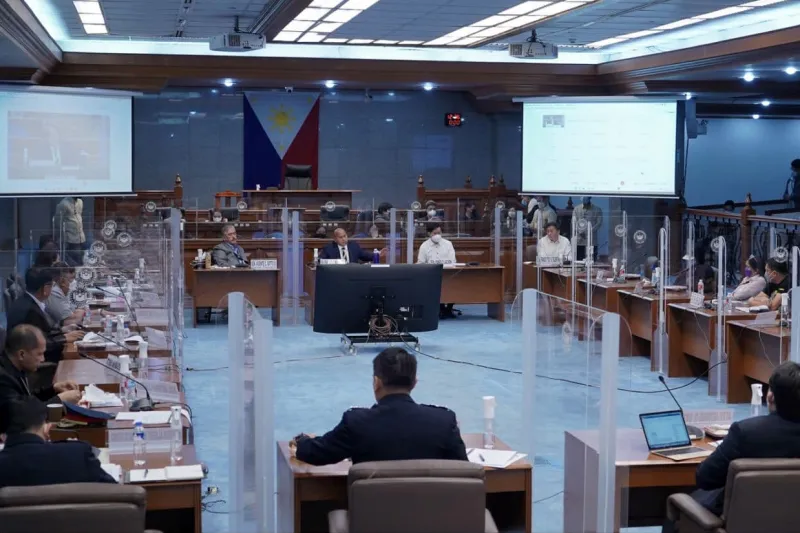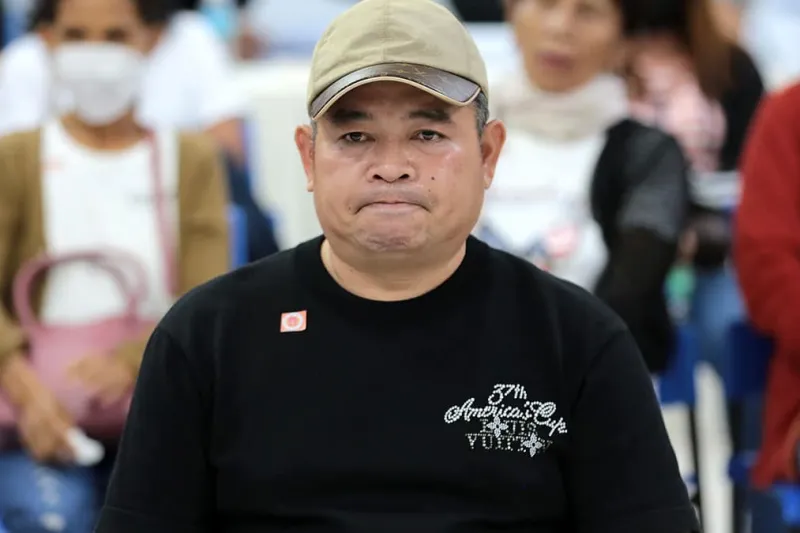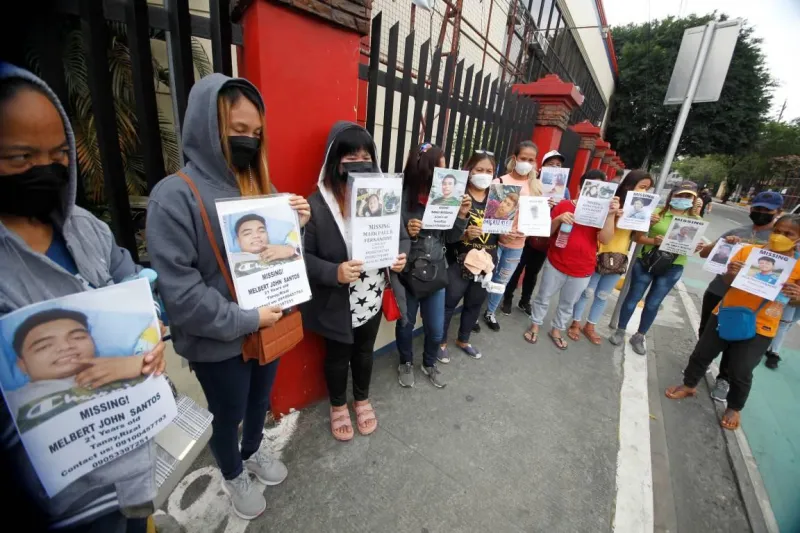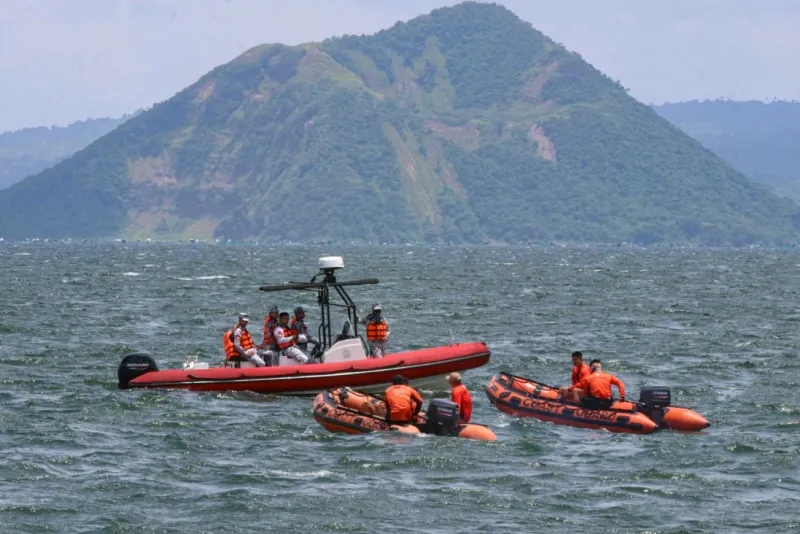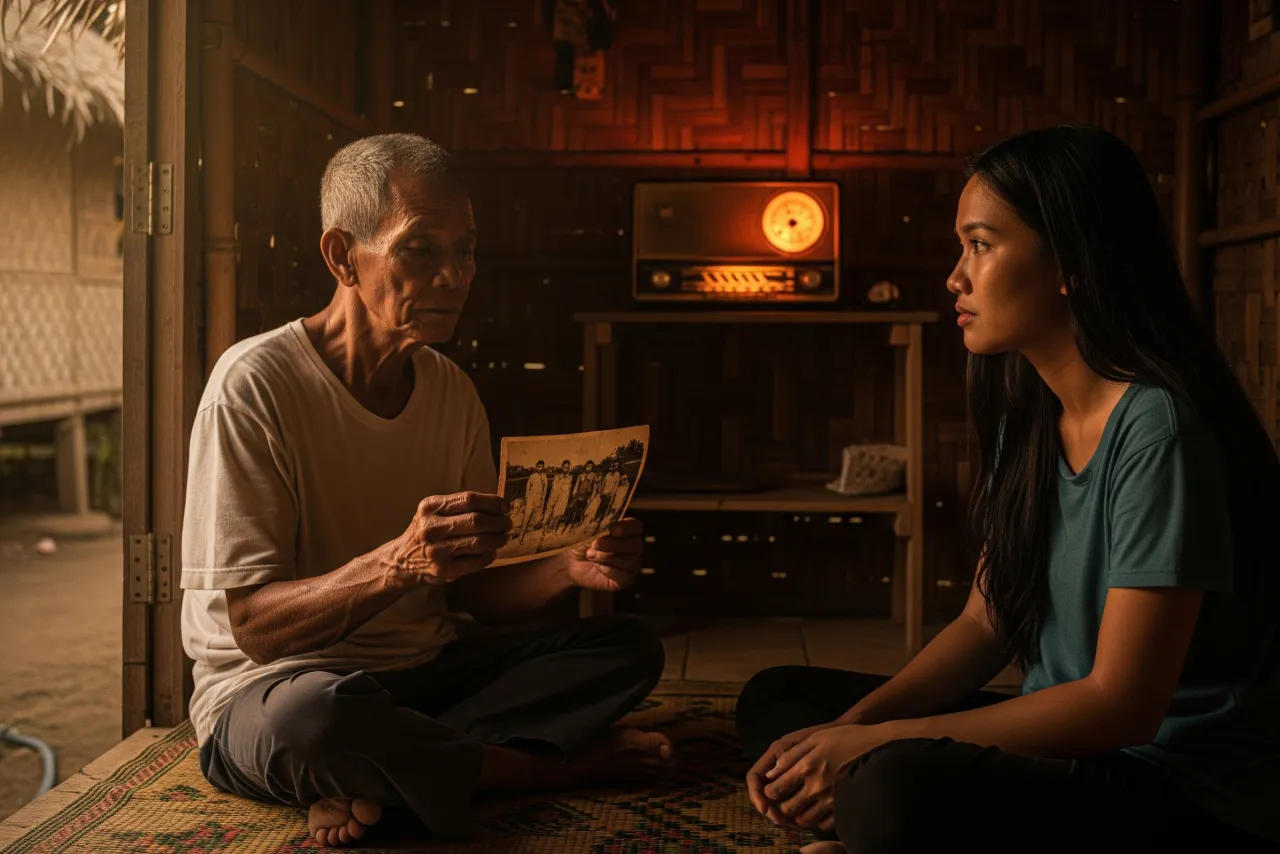On the evening of August 30, 2021, armed men stormed the home of Ricardo “Jon Jon” Lasco in San Pablo, Laguna. They identified themselves as agents of the National Bureau of Investigation (NBI). The men presented an apparent arrest warrant, charging the 48-year-old chicken breeder with “large-scale estafa”. His family watched as the men escorted him out. They also took a box reportedly containing jewelry, watches, and money. No one has seen him since. The San Pablo police chief later confirmed the NBI conducted no such operation that day.
Ricardo Lasco was not an isolated case. His violent abduction was part of a chilling pattern. This pattern unfolded across Luzon between April 2021 and January 2022. In just nine months, at least 34 men connected to cockfighting vanished. These sabungeros were taken from their homes, cockpits, and streets, from Laguna to Manila. The operations were often brazen and conducted in broad daylight. They left behind abandoned vehicles, terrified families, and a profound silence.
For years, their fate remained a haunting mystery. The case is a testament to a justice system that seemed unable or unwilling to solve a mass kidnapping. The crime bore the hallmarks of a sophisticated and protected criminal enterprise. The case of the missing sabungeros is more than a crime story. It exposes the dark underbelly of a multi-billion peso gambling industry. It reveals the deep-seated culture of impunity within Philippine law enforcement and the devastating human cost when state institutions fail their citizens. This report meticulously documents the tragedy’s timeline, analyzes the powerful forces at play, and critically examines the systemic failures that have left dozens of families in agonizing limbo.
Part I: The Timeline of a Mystery
The disappearances of the sabungeros were not a single event. They were a series of calculated, coordinated abductions over nine months. The investigation that followed moved at what families have described as a “glacial pace”. It was marked by long periods of stagnation and punctuated by shocking revelations. This timeline documents the known facts and the official response, establishing a foundation for the complex web of crime and corruption.
A Spate of Disappearances (2021-2022)
The abductions began quietly. They escalated in frequency and audacity as 2021 ended. The perpetrators operated with a high level of organization, suggesting meticulous planning and surveillance.
Laguna: Ground Zero
The province of Laguna became the crisis’s epicenter. It accounted for 19 of the 34 known victims. The first documented case was Michael Bautista. On April 28, 2021, two men in Santa Cruz, Laguna, escorted him away in handcuffs. The most brazen early abduction was Ricardo Lasco’s on August 30, 2021. The perpetrators used fake NBI identities and a fraudulent warrant. This showed a sophisticated understanding of law enforcement procedures, designed to neutralize resistance. This method suggests an operation intended to project an aura of official sanction.
Bulacan to Batangas
The crisis escalated dramatically in early 2022. On January 5, brothers Jeffrey and Nomer Depano from Hagonoy, Bulacan, vanished. They failed to return home after a cockfight in Lipa, Batangas. Searchers found their abandoned van two days later, containing only their clothes. According to their parents, Jeffrey was not a regular sabungero and had only tagged along, which underscores the seemingly random nature of the targeting. The very next day, January 6, three more men from Hagonoy also went missing. Edgar Malaca, Alexander Quijano, and Atong Sacdalan had told their families they were headed to an e-sabong event in Lipa.
The Manila Arena Incident
The most significant single event happened on January 13, 2022. Ten men vanished from the Manila Arena in Santa Ana. First, four players were reported missing. Then, six more disappeared from the same venue. The operation was highly coordinated. CCTV footage captured a convoy of vehicles leaving the arena. The convoy included a Toyota Tamaraw FX, which was later seen stopping along the Osmeña Highway. An unidentified man was transferred from the FX to a tailing car. This footage provided a clear record of a multi-vehicle, multi-personnel operation, far beyond the capabilities of a small criminal group.
Early Clues and Financial Traces
A critical piece of evidence emerged after the Laguna disappearances. On January 14, 2022, CCTV captured an unidentified man withdrawing over ₱29,000 from a victim’s ATM account. This act provided a direct financial link to the abductors. It also showed their access to the victims’ personal information. The victim’s wife confirmed the theft. A reward of ₱250,000 was offered for the man’s identification, but this lead initially went cold.
The Glacial Pace of Justice (2022 – 2025)
The official investigation into the disappearances started slowly. For years, it yielded few meaningful results. This deepened the families’ anguish and fueled public suspicion of a cover-up.
Initial Investigations and Official Denials
Local news outlets first reported the disappearances on January 18, 2022. The Philippine National Police (PNP) initially theorized the cases were linked to “match fixing” within the e-sabong world. On February 17, 2022, then-Department of Justice (DOJ) Secretary Menardo Guevarra ordered the NBI to launch its own investigation. Early on, misinformation marred the probe. On February 25, 2022, police debunked viral social media posts that falsely claimed the bodies of the sabungeros had been found. They condemned it as an attempt to derail their investigation.
The Senate Steps In
As public pressure mounted, the Philippine Senate took action. The Committee on Public Order and Dangerous Drugs, chaired by Senator Ronald “Bato” dela Rosa, launched public hearings in February 2022. These hearings became a crucial platform for families to voice their plight. Key evidence, like witness testimonies implicating Manila Arena security personnel, also became public. On February 28, 2022, the Senate passed Resolution No. 996. It urged the Philippine Amusement and Gaming Corporation (PAGCOR) to suspend all e-sabong operations until the case was resolved. During the hearings, the name of gambling tycoon Charlie “Atong” Ang first surfaced, though he denied any involvement.
A Case Goes Cold
The investigation languished for more than three years despite the high-profile Senate hearings. Families held dialogues with the DOJ in December 2022. They expressed frustration and pleaded for justice, but officials offered no specific timeline. Developments were minor. In October 2022, authorities traced the cellphones of two victims but did not disclose the location. In December 2022, the DOJ indicted three police officers for Ricardo Lasco’s 2021 kidnapping, the first official confirmation of law enforcement involvement. Police released photos of six Manila Arena security guards in February 2023, and the DOJ offered a ₱6 million reward, but the masterminds remained untouched.
The 2025 Breakthrough: A Whistleblower and a Lake
The case blew open dramatically in June 2025. A whistleblower, Julie “Totoy” Patidongan, emerged. Patidongan, an accused in the case, decided to testify against his alleged former employers. His testimony provided the first comprehensive, horrifying narrative. He alleged that the sabungeros were abducted and systematically executed by being strangled with tie wires. He claimed their bodies were then dumped in Taal Lake. Patidongan also stated the true number of victims was closer to 100, not 34.
This bombshell revelation galvanized the government. The DOJ, under Secretary Jesus Crispin Remulla, immediately announced it would investigate the claims. The Philippine Coast Guard (PCG), Navy, and PNP mobilized for a search and retrieval operation in Taal Lake. On July 10, 2025, divers began their search. Within days, they recovered sacks containing what appeared to be human bones, clothing, and other personal effects. This lent significant credibility to Patidongan’s account and marked the most significant breakthrough in the four-year-old case.
| Victim’s Name(s) | Date of Disappearance | Location of Disappearance | Known Circumstances |
| Michael Bautista | April 28, 2021 | Santa Cruz, Laguna | Two men escorted him away in handcuffs. |
| Two Unnamed Sabungeros | May 11, 2021 | Santa Cruz, Laguna | A cellphone video showed them before their disappearance. |
| Ricardo “Jon Jon” Lasco | August 30, 2021 | San Pablo, Laguna | Armed men posing as NBI agents abducted him from his home with a fake warrant. |
| Jeffrey & Nomer Depano | January 5, 2022 | Hagonoy, Bulacan (Missing) / Lipa, Batangas (Last Seen) | They failed to return home after a cockfight; their van was found abandoned. |
| Edgar Malaca, Alexander Quijano, Atong Sacdalan | January 6, 2022 | Hagonoy, Bulacan (Missing) / Lipa, Batangas (Destination) | They went missing after saying they were going to an e-sabong event in Lipa. |
| John Claude Inonog & 9 Others | January 13, 2022 | Manila Arena, Santa Ana, Manila | They disappeared from the arena; CCTV showed a convoy of vehicles leaving. |
Part II: The Shadow of E-Sabong
The disappearances of the sabungeros are inseparable from the world of e-sabong. The COVID-19 pandemic transformed this traditional pastime into a national, digital gambling industry. It was worth billions of pesos and operated 24/7. Its regulatory framework proved tragically inadequate to control the violent forces it unleashed.
The Rise of a Digital Blood Sport
The COVID-19 lockdowns created a perfect storm for e-sabong‘s rise. Traditional cockpits closed, and millions of Filipinos were confined to their homes. Online platforms provided an accessible, round-the-clock outlet for gambling. The industry’s growth was staggering. At its peak, e-sabong was estimated to gross as much as P3 billion per day. This made it one of the country’s most lucrative vices, second only to the illegal drug trade.
Government Sanction and Regulation
The Philippine Amusement and Gaming Corporation (PAGCOR) legitimized and regulated this digital gold rush. Under its framework, operators had to be registered corporations and undergo probity checks. They also had to pay substantial licensing fees. PAGCOR’s regulations mandated know-your-customer (KYC) protocols and age verification. It also required integration with a third-party audit platform to monitor transactions. This official sanction turned e-sabong into a major source of government revenue. It generated P6.2 billion for PAGCOR between April 2021 and April 2022 alone.
A Complex Industry Structure
The industry’s structure was a complex pyramid. At the top were PAGCOR-licensed operators like Atong Ang’s Lucky 8 Star Quest. Below them was a vast network of promoters, agents, and gamecock owners. This sprawling ecosystem was difficult to monitor and control effectively.
Game Fixing, Website Cloning, and Death
The immense financial stakes of e-sabong created a powerful motive for violence. The main theory behind the disappearances is that they were brutal retribution for cheating. In the world of sabong, cheating can take several forms. This includes game-fixing, known as pangti-tyope, where a fight’s outcome is predetermined. Another threat was “website cloning,” where illicit sites would pirate live feeds to solicit bets illegally, siphoning off revenue. A single cockfight could attract tens of millions of pesos in bets in minutes. Any disruption to revenue was a serious matter. In an environment with weak law enforcement, powerful operators allegedly created their own justice system. They investigated, judged, and punished accusations of cheating not in a court, but through abduction and execution.
The Shutdown and its Aftermath
Growing public outrage, amplified by Senate hearings, forced then-President Rodrigo Duterte’s hand. He had initially defended the industry, citing the P640 million in monthly government revenue. However, on May 3, 2022, he ordered the immediate shutdown of all e-sabong operations. His decision was based on a DILG survey highlighting the game’s severe “social cost,” including addiction and crime.
The ban’s impact on the investigation was complex. While it dismantled the legal industry, it did not eliminate the practice. Instead, it drove operations underground. An estimated 2,000 illegal e-sabong sites continued to operate. This shift may have made it harder for investigators to track key figures. The ban, later upheld by President Ferdinand Marcos Jr., was a necessary response to a social crisis. However, it was also a tacit admission of the state’s failure to regulate the industry it had created.
Part III: The Accused and the Accusers
A complex cast of characters sits at the heart of the sabungeros case. This includes a self-confessed participant turned state witness, a powerful gambling tycoon, and a network of police officers accused of betrayal. Understanding their alleged roles is crucial to unraveling the conspiracy.
The Whistleblower’s Gambit: Julie “Totoy” Patidongan
The investigation’s trajectory changed forever with the emergence of Julie “Totoy” Patidongan. He is not a neutral observer but a central figure. He faces charges of kidnapping and serious illegal detention for his role in the Manila Arena incident. Patidongan was formerly a trusted farm manager for Atong Ang’s Lucky 8 Star Quest. Witnesses identified him during the 2022 Senate hearings as one of the men who dealt with accused cheaters.
Facing non-bailable charges and claiming threats to his life, Patidongan came forward in June 2025. His testimony provided a chillingly detailed account. He named Atong Ang as the “ultimate mastermind” who ordered the disposal of cheating sabungeros. He described a systematic process of abduction, execution by strangulation, and the disposal of over 100 bodies in Taal Lake. He also implicated actress Gretchen Barretto, claiming she was a key member of Ang’s inner circle. Crucially, he alleged a “kill team” of active and former police officers carried out the abductions and killings.
Corroborating the Whistleblower
Patidongan’s credibility has been a central question. However, subsequent events have significantly bolstered his account. The DOJ-led search of Taal Lake recovered sacks of bones and personal items, corroborating his claims. Furthermore, his two brothers, Elakim and Jose, were arrested. They have reportedly provided testimony supporting his narrative. Elakim Patidongan, in particular, is a key eyewitness, having allegedly witnessed ten murders firsthand. The DOJ is now working to include Julie Patidongan in the Witness Protection Program, a clear sign of his value to the prosecution.
The Gambling Tycoon in the Crosshairs: Charlie “Atong” Ang
Charlie “Atong” Tiu Hay Ang has been a fixture in the Philippines’ gambling and political landscape for decades. His name is synonymous with both great wealth and persistent controversy. His involvement stems from his ownership of Lucky 8 Star Quest Inc. This company operated the Manila Arena and other cockpits where many victims were last seen.
Ang has vehemently denied all allegations. He maintains he is the victim of a smear campaign and a P300 million extortion attempt by Patidongan. He has filed counter-charges, portraying Patidongan as a disgruntled and criminal former employee. During Senate hearings, Ang projected an image of a legitimate businessman, claiming rivals were conspiring against him.
However, his history is marked by high-level political scandals. He was a central figure in the corruption case that ousted President Joseph Estrada. He eventually pleaded guilty to bribery after admitting he delivered P130 million in diverted tobacco taxes to the former president. This long history of operating in the gray areas between legal and illegal gambling paints a picture of a powerful figure adept at navigating power.
The Blue Wall of Silence?: Police Involvement
The most alarming dimension of the case is the alleged direct involvement of numerous police officers. Patidongan’s testimony has implicated at least 18 policemen, including high-ranking officers. The National Police Commission (NAPOLCOM) found probable cause to file administrative cases against 12 active-duty officers. It placed them under preventive suspension for grave misconduct. The officers named include Lt. Col. Ryan Jay Orapa and Maj. Mark Philip Almedilla.
A Pattern of Impunity
What is particularly disturbing is the institutional history of these officers. A NAPOLCOM review revealed that most of the implicated policemen had faced numerous prior administrative cases for serious offenses. These included homicide and robbery-extortion. In one instance, an officer had 13 previous cases filed against him. In every single instance, the system exonerated them. This pattern suggests a systemic failure within the PNP’s internal disciplinary mechanisms. It allowed officers with a history of alleged criminality to remain in service.
This aligns with Patidongan’s claim that the perpetrators were a “death squad.” He described a team of seasoned executioners who had honed their skills during the “war on drugs”. This theory posits that the state’s campaign of extrajudicial killings created a cadre of officers desensitized to violence and protected by impunity. This made them ideal recruits for a private syndicate. The investigation is now reportedly looking into the possible involvement of police generals, indicating the conspiracy may reach the highest levels of the force.
| Name/Group | Alleged Role | Status | Key Allegations | Source of Allegation |
| Charlie “Atong” Ang | Mastermind | Suspect; Under Investigation | Ordered the abduction and killing of over 100 sabungeros for alleged cheating. | Julie Patidongan Testimony |
| G Gretchen Barretto | Key Member of Inner Circle | Person of Interest | Was present during meetings where killings were discussed; had full knowledge of the operation. | Julie Patidongan Testimony |
| Julie “Totoy” Patidongan | Farm Manager / Organizer | Accused / Whistleblower | Organized abductions, handled logistics, and witnessed killings on Ang’s orders. | Self-Confession; State Witness |
| Elakim Patidongan | Accomplice / Eyewitness | Witness | Directly witnessed the murder of 10 sabungeros. | Self-Confession; State Witness |
| 18 PNP Officers (12 active, 6 dismissed) | “Kill Team” / Abductors | Under Administrative Investigation / Suspended | Carried out abductions, transport, and execution of victims for payment. | Julie Patidongan Testimony |
Part IV: A System on Trial
The disappearance of the sabungeros is not just a series of crimes. It is a symptom of a deeper malaise within the Philippine state. It exposes a justice system crippled by a culture of impunity. The lines between state security forces and private criminal enterprises have blurred. The case puts the very institutions of governance on trial.
Echoes of the “War on Drugs”
The methods and alleged perpetrators in the sabungeros case are chillingly similar to the extrajudicial killings (EJKs) of the Duterte administration’s “war on drugs.” Human rights groups have documented the patterns of the drug war. Police operations, often based on unverified “watch lists,” resulted in thousands of deaths. Officers frequently claimed victims “fought back” (nanlaban). These operations were characterized by a near-total lack of accountability, creating a “culture of impunity”.
Privatizing Extrajudicial Killings
The sabungeros case appears to be a direct continuation of this legacy. Whistleblower Julie Patidongan stated that the police officers recruited for the “kill team” were the “tagaligpit sa war on drugs noon” (the executioners from the drug war). Justice Secretary Remulla has also acknowledged a probable link. He stated that some individuals involved in the drug war’s “death squads” may also be involved in the e-sabong killings. This connection suggests the drug war created a cadre of state agents experienced in abduction and murder. They operated with the belief that they were protected from prosecution. This deadly skill set, once deployed for a state campaign, was then allegedly sold as a service to a private enterprise.
The Struggle for Accountability
The institutional response has been inadequate, further eroding public trust. For years, the PNP and NBI investigations produced minimal results. The investigation only moved forward after the whistleblower’s testimony forced the issue into the national spotlight. The PNP is now in the compromised position of investigating a crime where its own officers are primary suspects. This raises questions about its capacity for an impartial investigation. The fact that many implicated officers had long histories of dismissed complaints points to a systemic breakdown in internal accountability.
Limited Oversight
The Senate hearings provided a vital forum for public scrutiny. They compelled agencies to act and gave a voice to the victims’ families. However, the Senate’s power is limited to inquiry and recommendation. Its 2022 report directed the PNP and NBI to continue their investigation but could not force a resolution. The Commission on Human Rights (CHR) has also played a crucial role. It conducted its own investigation, held dialogues with families, and called for urgent government action. Yet, its influence depends on the willingness of other government branches to heed its recommendations.
Media Under Pressure:
Investigative journalism has been essential in keeping the case alive. Major news outlets have provided continuous coverage. A key effort was the documentary “Lost Sabungeros” by GMA Public Affairs. The film took two years to produce. It involved extensive interviews with families and whistleblowers. It was set to premiere at the Cinemalaya Film Festival in August 2024.
However, organizers abruptly canceled the premiere just days before its screening. They cited vague “security concerns”. Subsequently, the Movie and Television Review and Classification Board (MTRCB) declined to rate the film. This effectively barred it from theatrical release, citing a potential violation of the
sub judice rule. Filmmakers and media advocates condemned these actions as censorship. They saw it as a chilling message to journalists tackling sensitive cases. The suppression of the documentary suggests that the forces behind the disappearances still wield considerable influence.
Part V: The Path to Justice
Recent breakthroughs have offered a glimmer of hope for the victims’ families. However, the path to true justice is filled with challenges. A just resolution will require successful prosecutions and deep, structural reforms to dismantle the culture of impunity.
Unearthing the Truth from Taal Lake
The search operations in Taal Lake are a critical but formidable step. As of August 2025, PCG divers have recovered multiple sacks containing skeletal remains. These include skulls, bone fragments, and personal items. These gruesome finds provide physical evidence for the whistleblower’s testimony.
Forensic Hurdles
The primary challenge is now forensic. The PNP’s forensic group initially could not extract DNA from the recovered bones. This was due to contamination from their long submersion in the lake’s unique geothermal water. In response, the DOJ has sought help from external experts. This includes renowned forensic pathologist Dr. Raquel Fortun and the Japanese government, which has more advanced technology. Authorities have collected DNA samples from 20 victims’ families to match against any recovered profiles.
Legally, recovering the bodies is not an absolute requirement for a murder conviction. The principle of corpus delicti refers to proof that a crime occurred, not necessarily the victim’s physical body. Prosecutors can still build a murder case on strong witness testimony and other evidence if forensic analysis is inconclusive.
Critical Analysis and Lingering Questions
The accumulated evidence suggests a possible high-level cover-up. This includes long investigation delays, prior exoneration of implicated officers, alleged interference with probes , and the censorship of the “Lost Sabungeros” documentary. The perpetrators may have believed that with enough time and influence, the case would fade from public memory. The persistence of the victims’ families and the media, along with an insider’s defection, defeated this strategy.
This case has profoundly damaged public trust in Philippine institutions. It reinforces a cynical perception of a two-tiered justice system: one for the poor and another for the rich and connected. Rebuilding this trust requires a full, transparent accounting of what happened and the conviction of all those responsible.
Recommendations for Reform and Redress
A comprehensive approach is required to ensure justice and prevent a recurrence.
For the Philippine Government and Judiciary:
- Establish an Independent Investigative Commission: The President should form an independent commission to investigate the case, removing it from the PNP’s purview to avoid conflicts of interest.
- Strengthen the Witness Protection Program: The government must ensure the Witness Protection Program (WPP) is adequately funded. It must provide credible, long-term security for witnesses and their families.
- Purge and Reform Law Enforcement: A top-to-bottom review of the PNP is necessary. The government must reopen administrative cases of all implicated officers and implement a transparent vetting system for promotions.
For Law Enforcement (PNP/NBI):
- Commit to Internal Cleansing: The PNP must demonstrate a genuine commitment to rooting out corruption. This requires empowering its Internal Affairs Service (IAS) with real prosecutorial power.
- Invest in Forensic Capabilities: The government must significantly increase investment in the PNP and NBI’s forensic science capabilities to strengthen evidence-based investigations.
For Civil Society and the International Community:
- Maintain Sustained Advocacy: Human rights organizations must continue to monitor the case, support the families, and hold the government accountable.
- Support and Protect Independent Media: The international community should increase support for independent investigative journalism in the Philippines, a vital public watchdog.
- Apply International Pressure: The Philippines’ international partners should use diplomatic tools to pressure the government for a credible and impartial resolution to this case and to end the broader culture of impunity.
The fate of the 34 missing sabungeros is a litmus test for the rule of law in the Philippines. A failure to secure justice would be an unforgivable betrayal. It would also send a chilling message that power, money, and a badge can still place one above the law.
